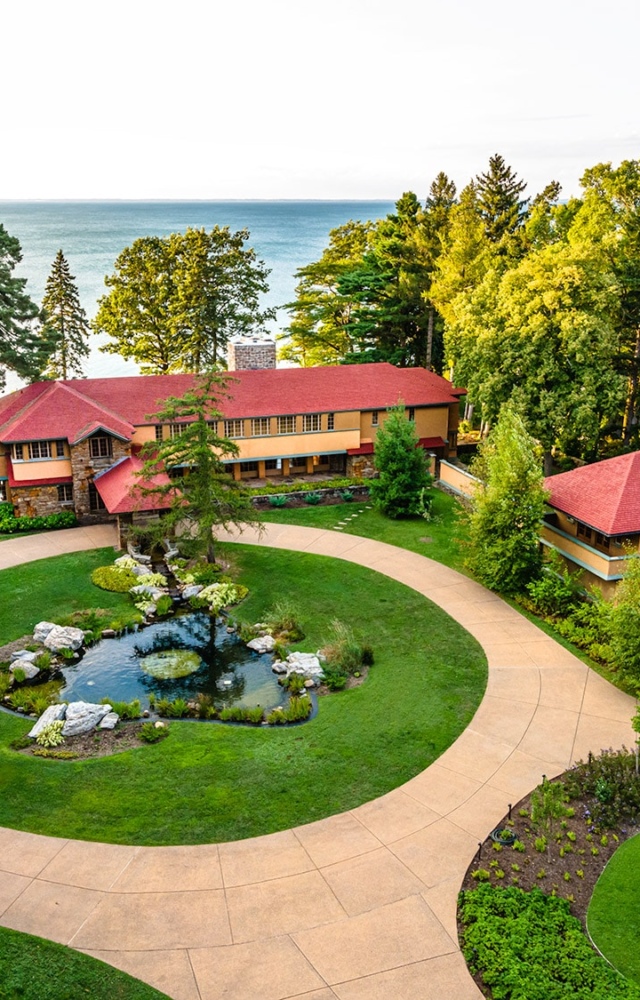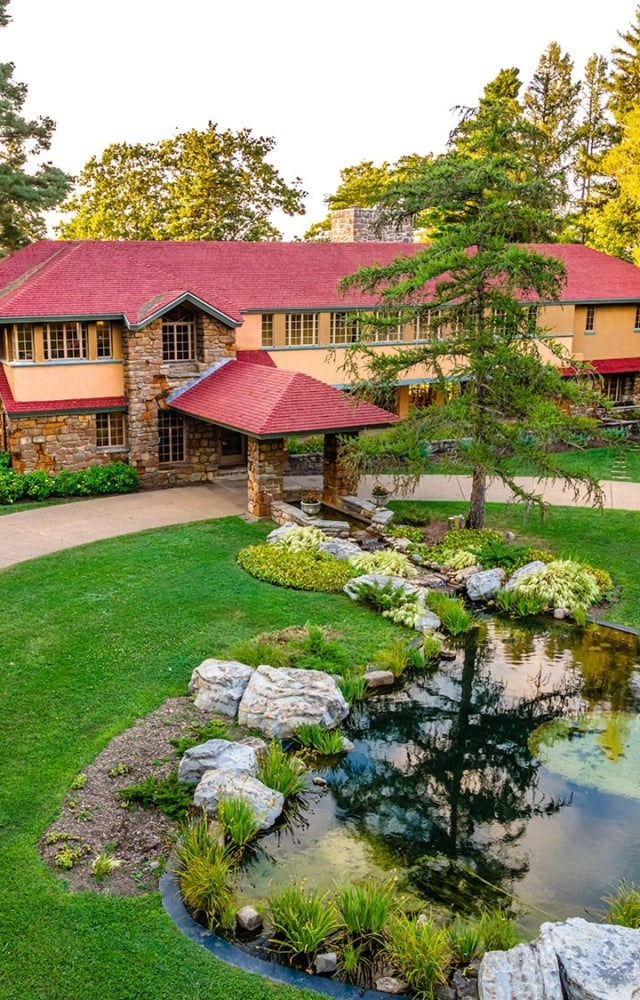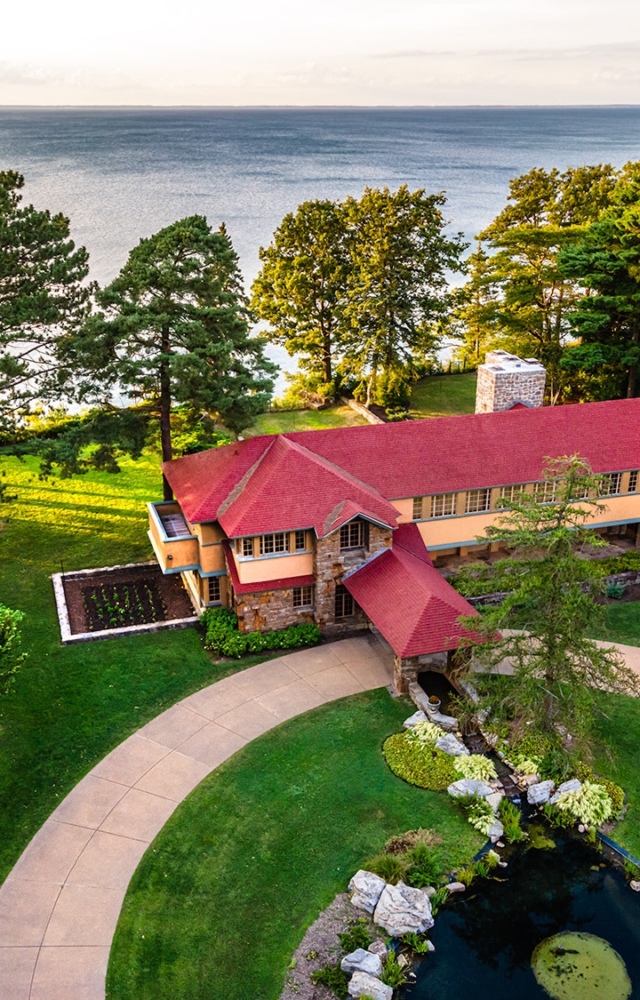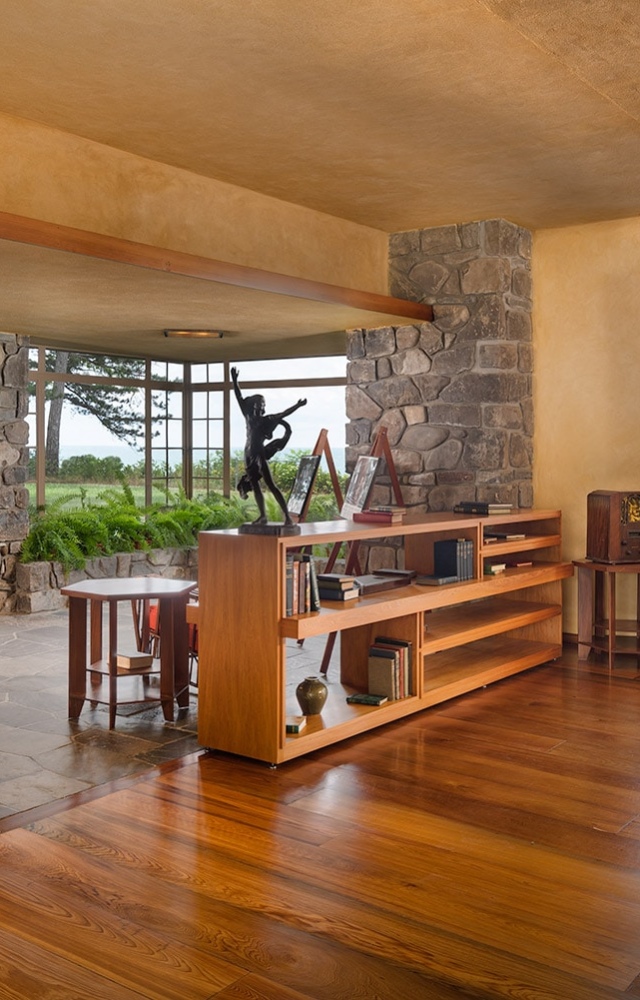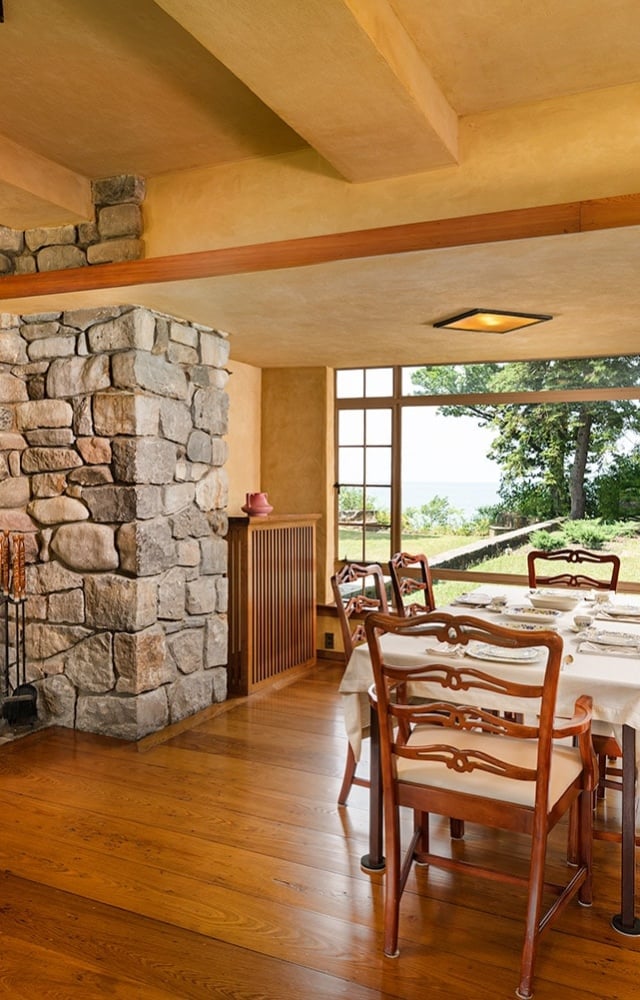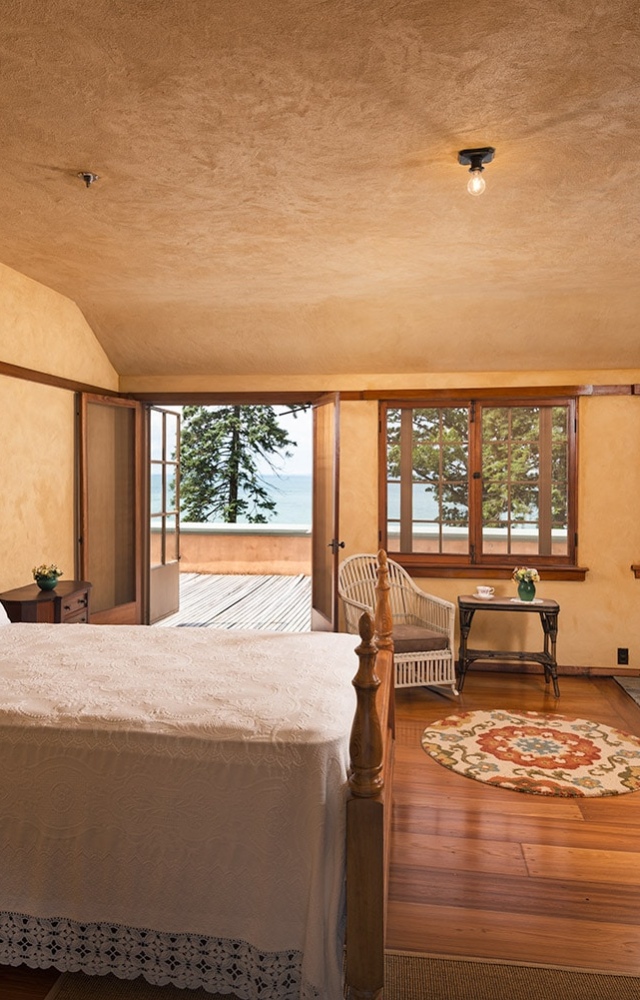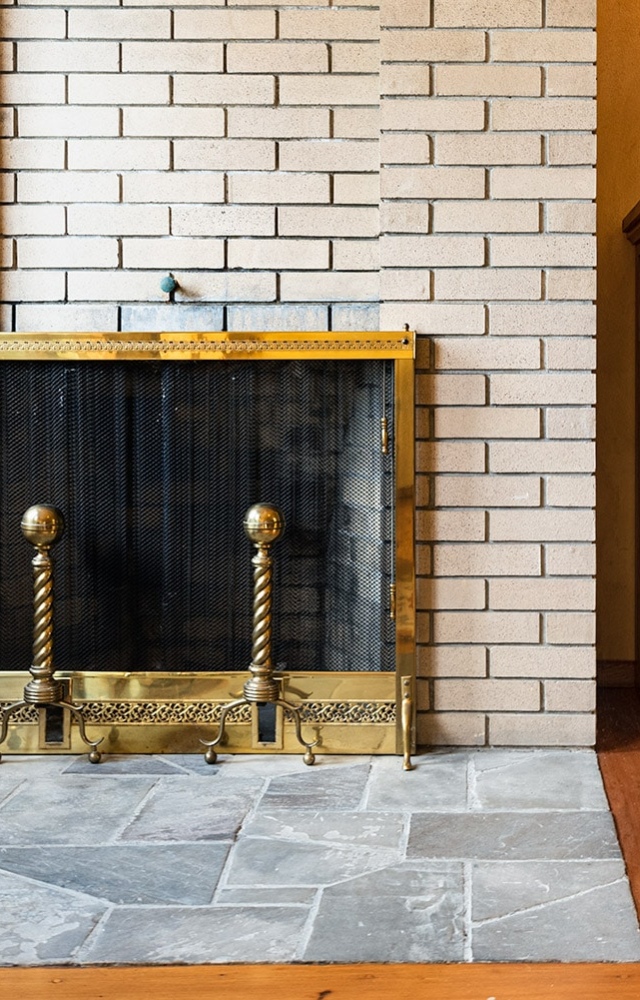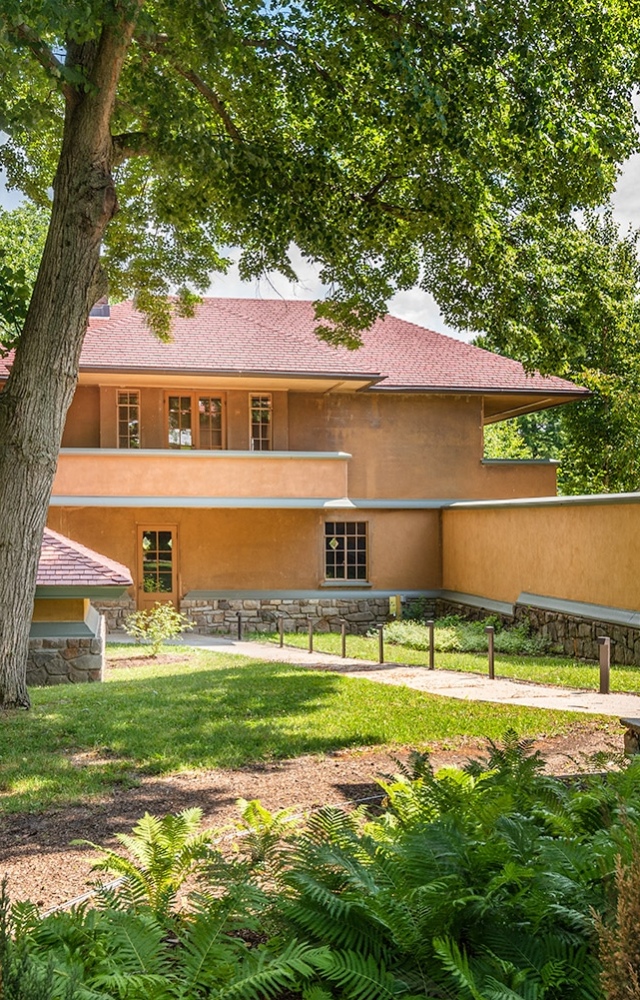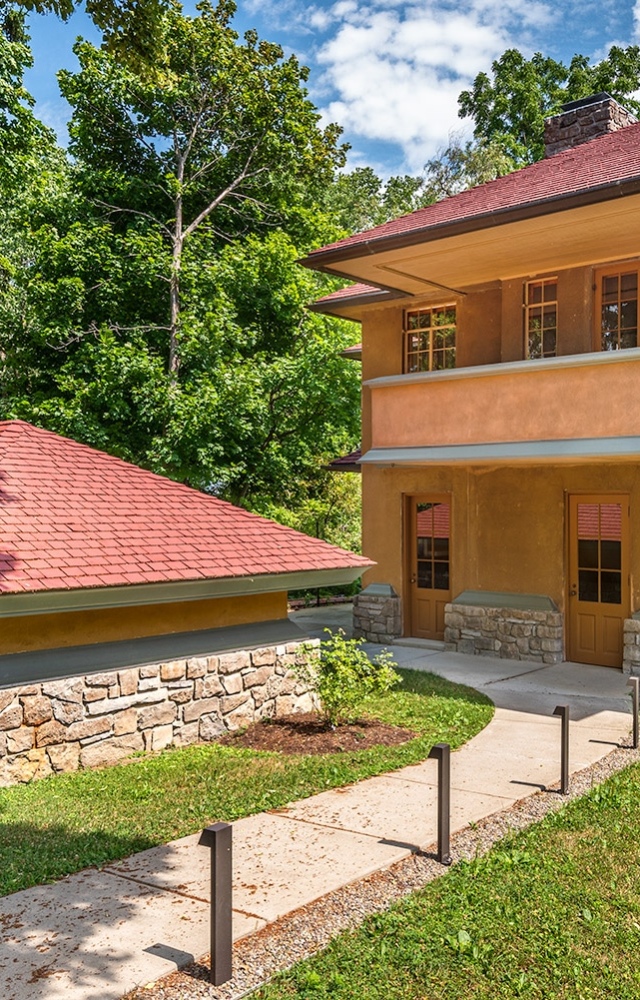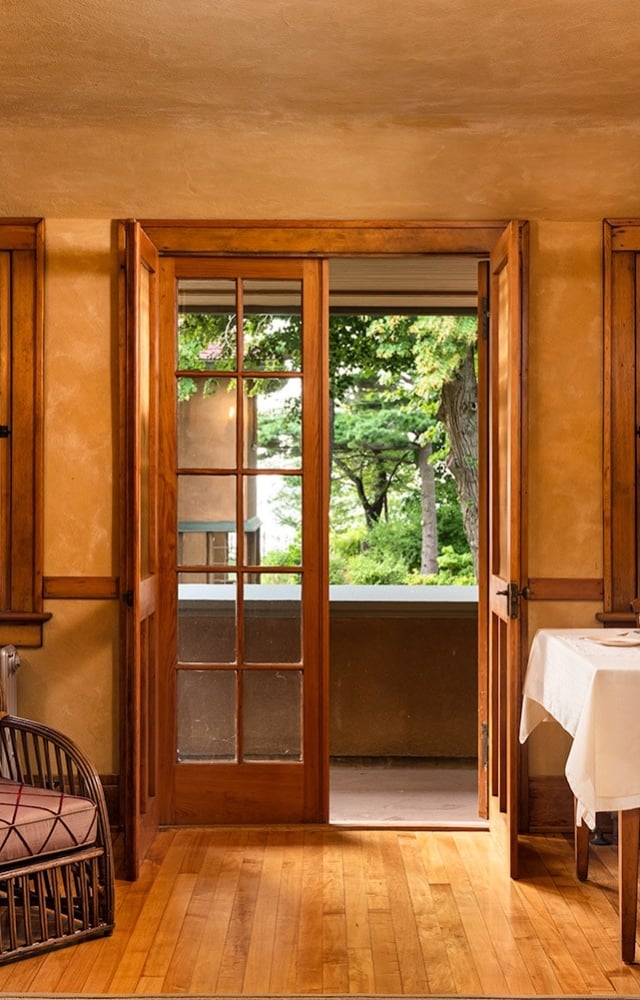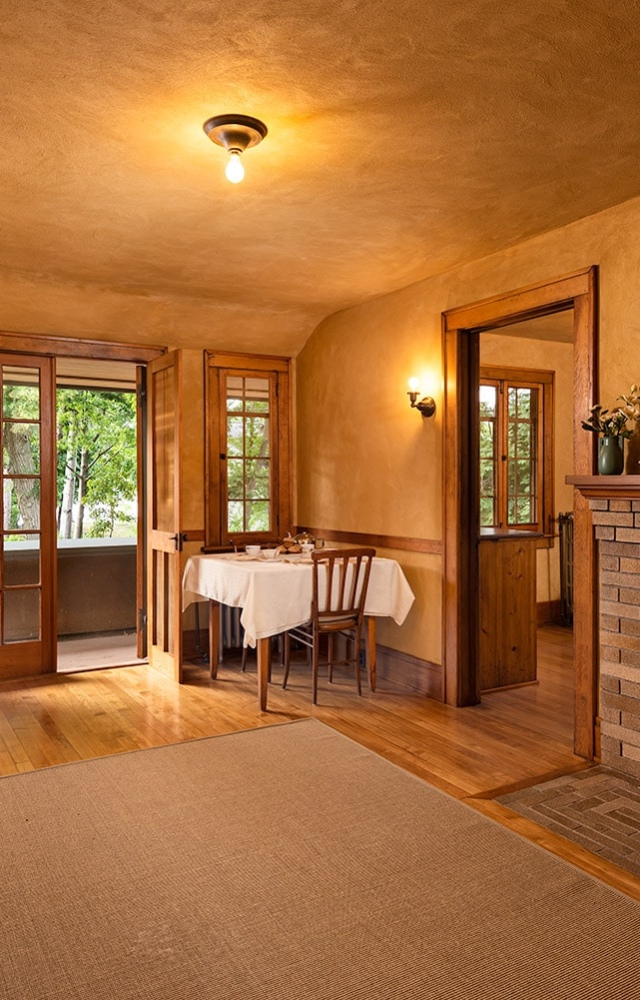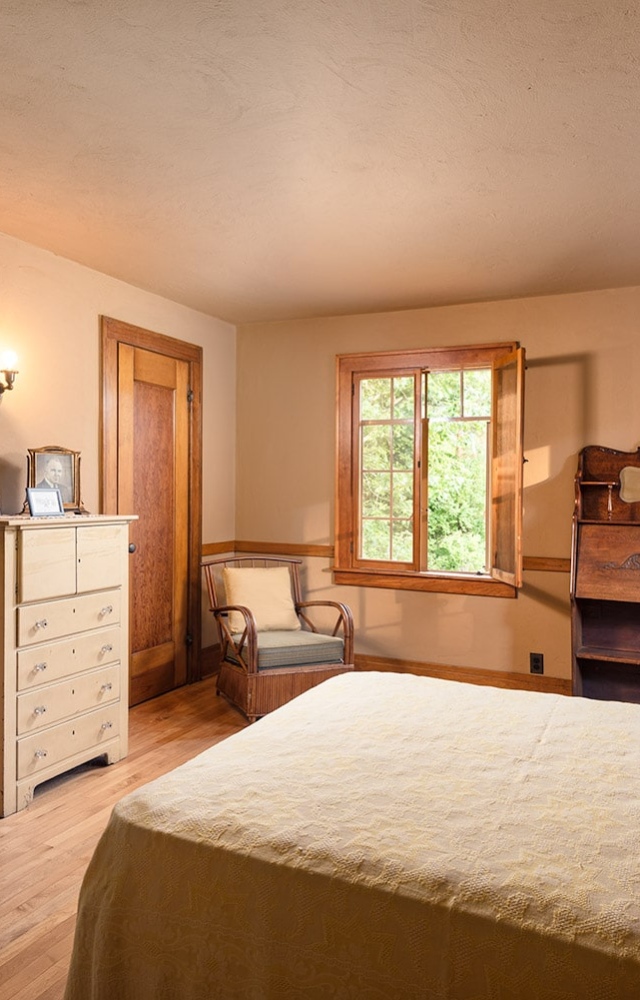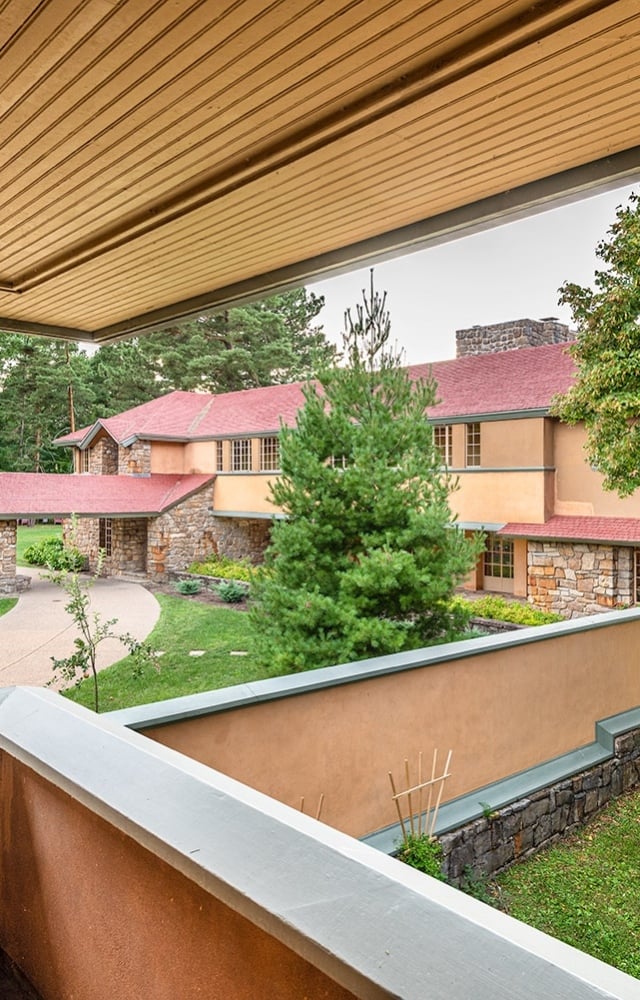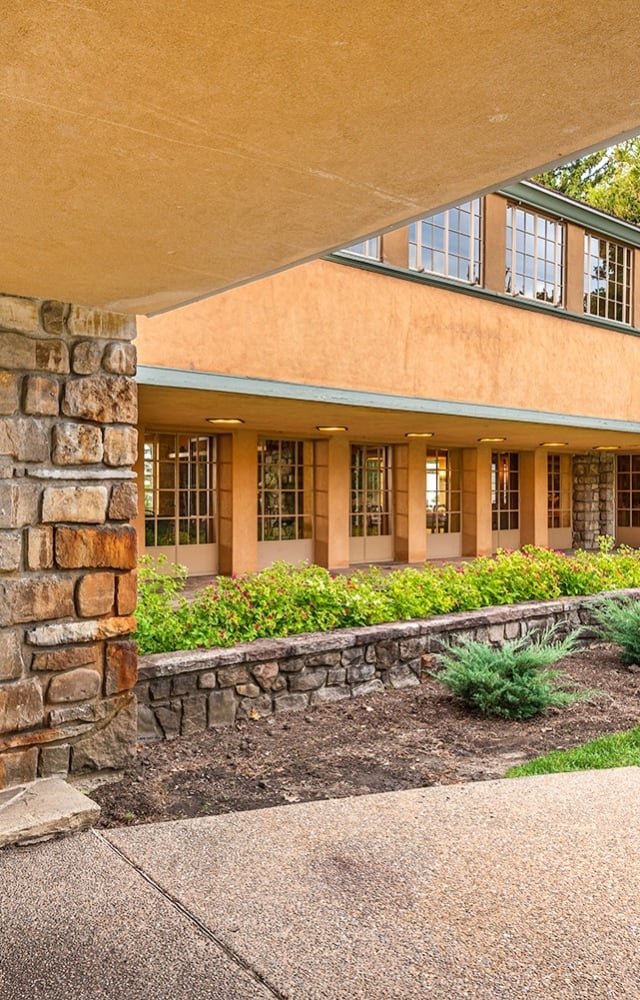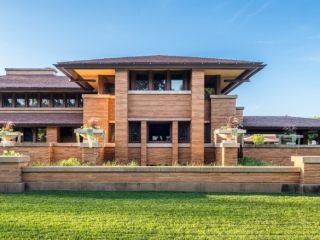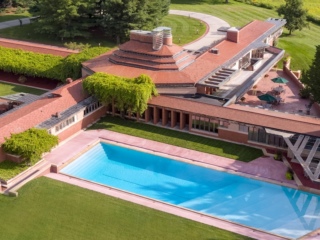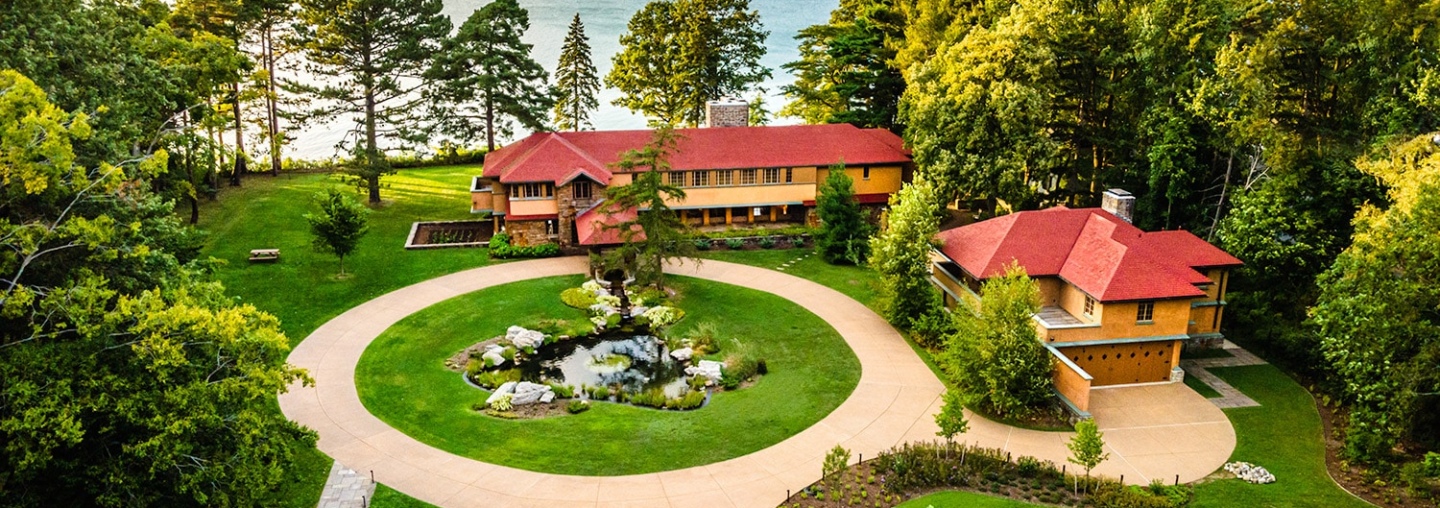
Buffalo Photographer Ventures to Graycliff
Matthew Digati | Apr 6, 2021
Buffalo, NY-based architectural photographer Matthew Digati recently took us on a visual journey to see the Martin House in Buffalo. Now, Matthew is back to lead us on a tour of Graycliff, an impressive Frank Lloyd Wright design 20 miles south of Buffalo overlooking Lake Erie.
All photos courtesy Matthew Digati.
Frank Lloyd Wright’s Graycliff is located 20 miles south of the City of Buffalo on a 60 foot cliff overlooking Lake Erie. Wright was commissioned by Darwin D. Martin (the same Darwin Martin that commissioned Wright to build the Martin House in Buffalo’s Parkside neighborhood) to design Graycliff in 1926 as a summer home for his wife, Isabelle, who played a large role in the design process. You can see my original article on Graycliff by following this link to my personal website, buffalohomes.co
I was able to speak with professional architect, founding member of the Graycliff Conservancy, and Frank Lloyd Wright enthusiast, Patrick Mahoney, about Graycliff’s history and the restoration process. Pat was recently given the title of Lifetime Honorary Board Member of Graycliff Conservancy by the Baird Foundation as well. Even though the Graycliff Conservancy wasn’t founded until 1997, Pat had kept a close eye on Graycliff since his first visit to the property in 1979. I asked him about the initial state of the property upon the Conservancy’s founding and acquisition of Graycliff:
“By 1997, I had monitored Graycliff for eighteen years since my initial visit to the property in 1979.
The property was overgrown and had mildly deteriorated in the time I had known it. Graycliff had a number of unsympathetic additions that masked the original integrity of the complex and threatened the success of the restoration effort…
The buildings were generally structurally sound but had been misunderstood and misinterpreted for so long that their image in the Wright world was marginal at best. I thought that if the Conservancy could reveal the original concepts of the design to influential historians,
the restoration would follow…
A lecture series sponsored by Graycliff brought some of the finest architectural minds to Buffalo and allowed them to further our understanding of the project. As they expounded on their realizations in future writings and webcasts, the general public began to appreciate Graycliff in a way never seen before.”
Complete restoration of a Wright designed structure is never a simple task, especially when it’s not easy to see the architectural beauty beneath the years of change Graycliff had undergone. For almost 50 years Graycliff had become home to a group of Piarist Fathers, a Hungarian order that adapted the site as a school for underprivileged youth and hub for Hungarian culture. Although they helped to ensure that the property was passed into the hands of the Graycliff Conservancy, they had constructed a number of other structures on the property and had adapted it for their specific needs. When I asked Pat about any barriers or setbacks that occurred throughout the restoration, it was easy to see his passion for the project and how a small dedicated team brought Graycliff back to it’s original beauty:
“The Conservancy overcame setbacks through the persistence of a small group of leaders that refused to accept the decisions of the powers that be. It was grass roots support that eventually ensured Graycliff’s success. The early board members were highly skilled, diverse, and dedicated (advertising, accounting, engineering, education, surveying, architecture, contracting). They staffed the site for tours and special events for several years until staff could be hired.”
Graycliff is unique in that Isabelle Martin had such a major role in the design. I asked Pat to speak
about what specific features are unique to Graycliff due to Isabelle’s influence during the design process:
“Graycliff’s setting above Lake Erie adds a layer of complexity to the siting of the interior and exterior spaces created by Wright at the property. Isabelle’s desire for a house filled with light was a clue to Wright that a formulaic approach to this project would not succeed. Isabelle’s extreme sensitivity to light led Wright to develop a house with soft reflected light rather than harsh direct sunlight in the principal spaces. This was also one of, if not the first time, Wright rotated the layout of the plan such that each space received reflected sunlight at some point in the day.”
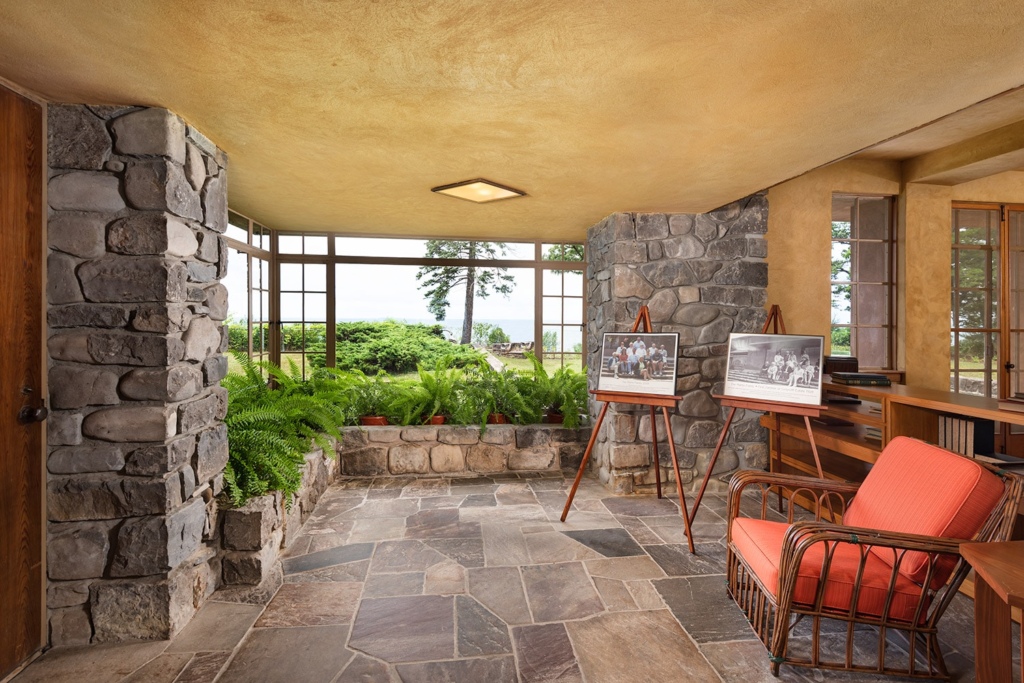
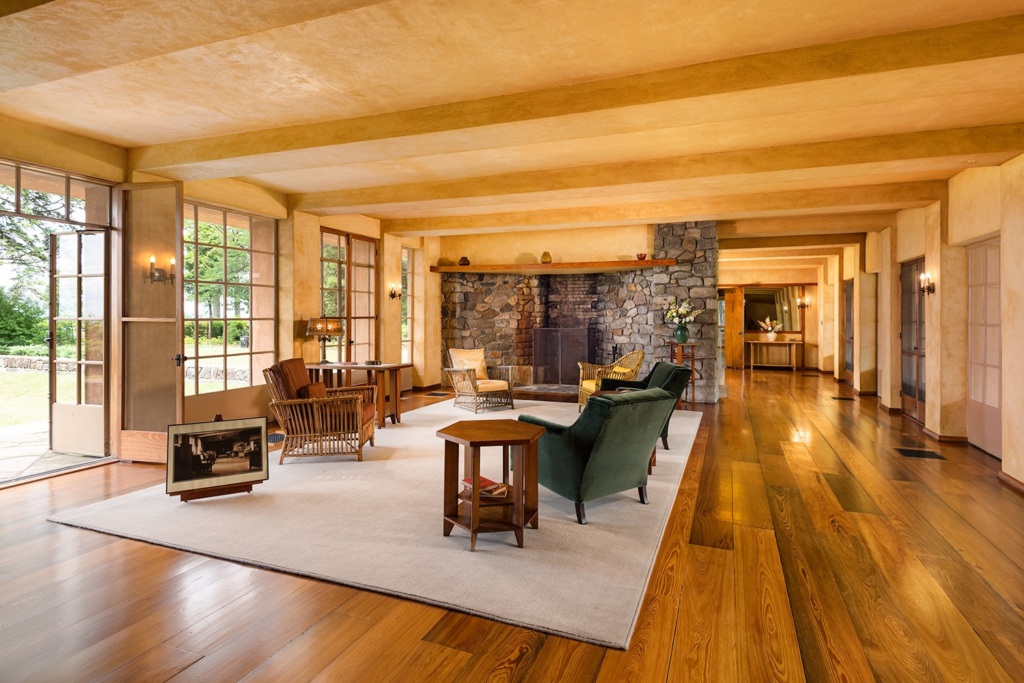
When visiting Graycliff, which you absolutely should, you immediately notice how important the view of Lake Erie is to the overall design. It’s no surprise to see water playing a large role in a Wright designed home, but no matter where you are on the property, inside or out, Lake Erie is always present. Pat explained to me that Graycliff, and many other Wright designed homes, is a place where one must live year round in order to experience all the subtle masterpieces that happen throughout the year.
“Graycliff is segregated into three sections in plan, a transparent middle and two relatively solid ends… The views created are subject to timing and specific conditions as well. Occasionally the spray of Niagara Falls is visible looking due North through the framed view in the center of the house. At other times, the sunset aligns with the entry drive. The constant reveal of conditions on the property resulted in many Wright homeowners commenting that over a lifetime these likely planned effects are slowly experienced and even more slowly comprehended.”
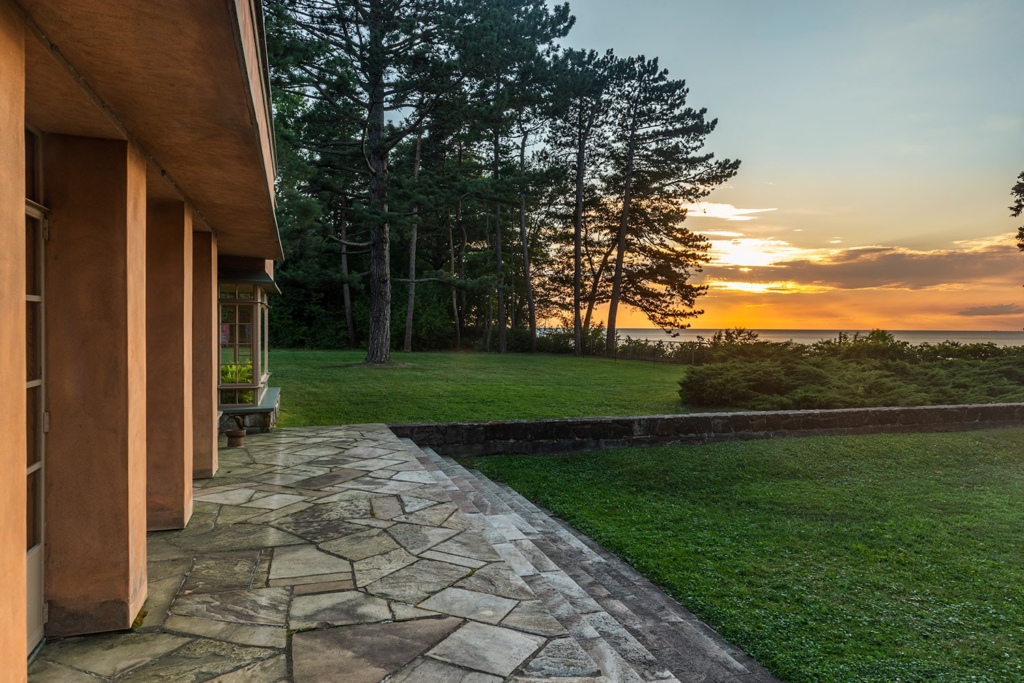
Sticking with the idea of water playing a key role in Graycliff’s design, I wanted to know more about the waterfall and pond feature in the middle of the property. It seems as though it’s meant to bring Lake Erie straight onto the property itself. Pat explained it was another way to incorporate Lake Erie into the design and create that sense of the lake always being present that was discussed above:
“Water features are not uncommon in Wright designs but they rarely fuse in the design concept in such a consequential way as they do at Graycliff. Of the four hundred or so Wright structures I have experienced only a handful exhibit such an integral relationship to the overall site. Those sites often have the benefit of a dramatic natural feature that Wright was challenged to create a dialogue with. I often comment that Graycliff might have been titled “How to Live on The Great Lakes” by Wright if prominently published.”
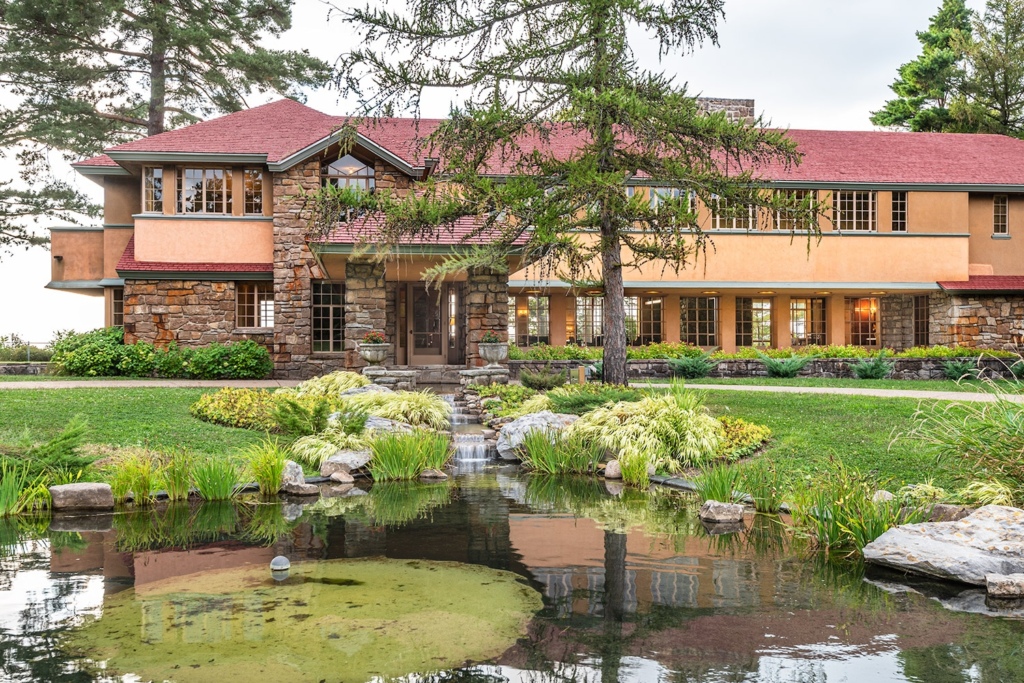
Finally, I wanted to give Pat the opportunity to share some of his fondest memories, his overall experience, and what, if anything, his work at Graycliff has taught him about Frank Lloyd Wright that he would not have otherwise been able to learn:
“Many of the fondest memories I have of Graycliff reflect upon the people encountered along the way. One active board member and volunteer expressed regret to me once that as his health failed, he would almost surely not live to see the golden age of Graycliff, where it was fully restored. He was correct, he did not live to see the completion of the restoration. I commented to him upon his statement that the comradery felt and sense of achievement each time some incremental advance was made in the project made me think that the real golden age was during the hard-won accomplishments we readily enjoyed along the way . . .
The in-depth analysis of Wright’s designs and correspondence for this extended period on this project have allowed me to develop an insight into his working methods that often proves valuable when trying to solve the frequent enigmas that arise when trying to interpret this or other Wright projects. The wonderful thing about these studies is that the mysteries never fail to continue and the pursuit of deciphering such puzzles provide recurrent gratification.”
Visiting Graycliff is something that any Wright enthusiast must do at some point. It’s picturesque location and vast property footprint offer a design element that can’t be experienced by visiting Wright structures built in cities. The drive from Buffalo to Graycliff hugs the shore of Lake Erie, offering a scenic route that’s enjoyable in itself. Upon entering the property, you are met with a long driveway heading straight to the lake and ending at the Visitor Center. From there, the grounds are open and beautiful.
I would like to sincerely thank Patrick Mahoney for his time, his knowledge, and his passion for saving and restoring this Frank Lloyd Wright masterpiece. He, along with the rest of the Graycliff Conservancy, has worked tirelessly over the past 25 years to bring this piece of history back to it’s original glory.
Please enjoy the photo gallery that I’ve put together. All the photos are my own and were captured in cooperation with the folks at Graycliff. I also would like to thank Anna Kaplan, Executive Director of Graycliff. Without her help I would not have been able to share these photos and this article with you all.
We hope you’ll have an opportunity to visit and explore Graycliff soon!

About the Author

Matthew is a Buffalo, NY based Real Estate and Architectural Photographer. He’s passionate about architecture and travel and is most comfortable behind his camera in a beautiful setting. His personal work is meant to inspire empathy amongst others and offer a perspective on why experiencing vastly different cultures from your own is the most important part of life. His professional work is meant to highlight the important role architecture plays in our everyday lives and why it’s so important.
If you would like to view more of his Matthew’s photography, please feel free to check out his websites:
digatiphotography.com

